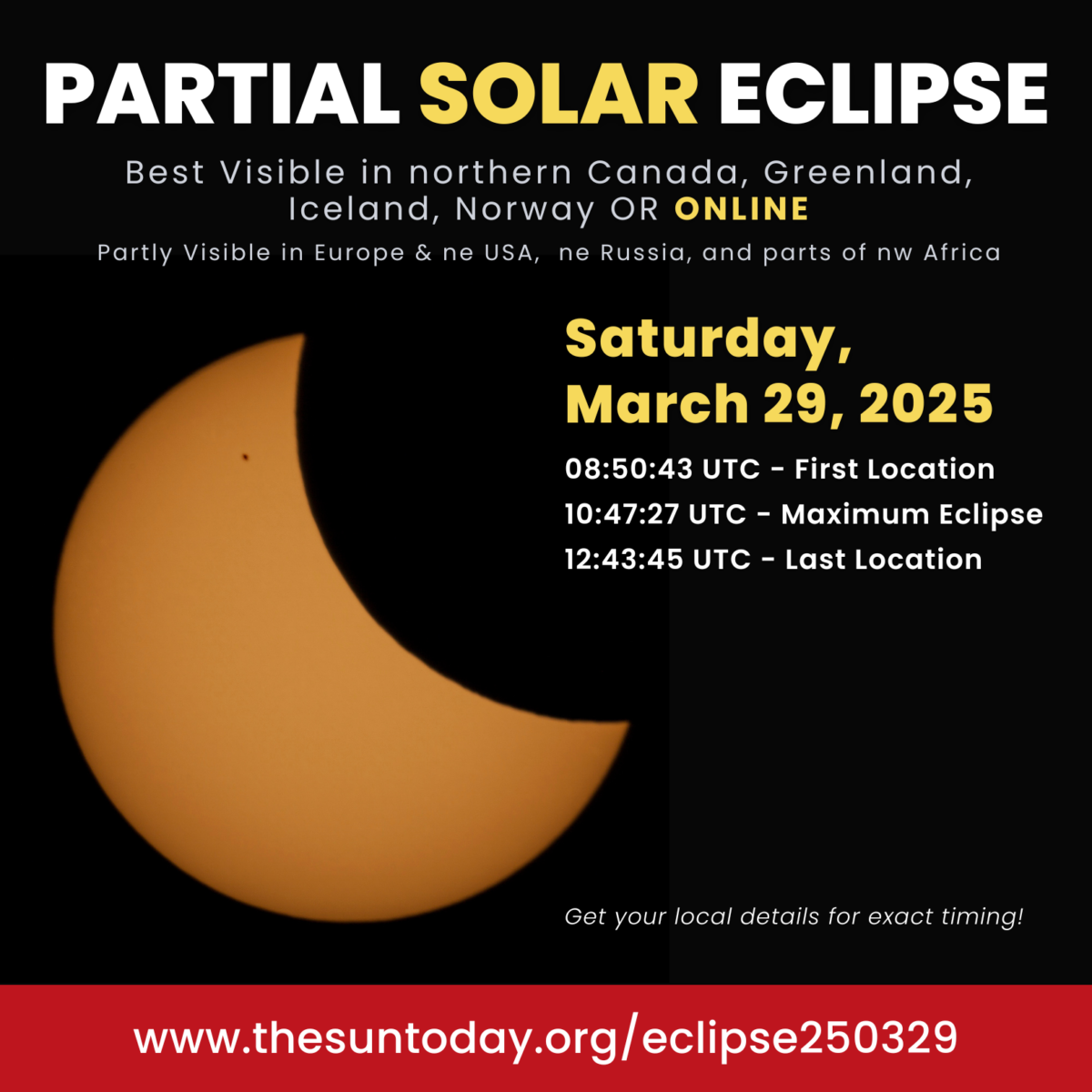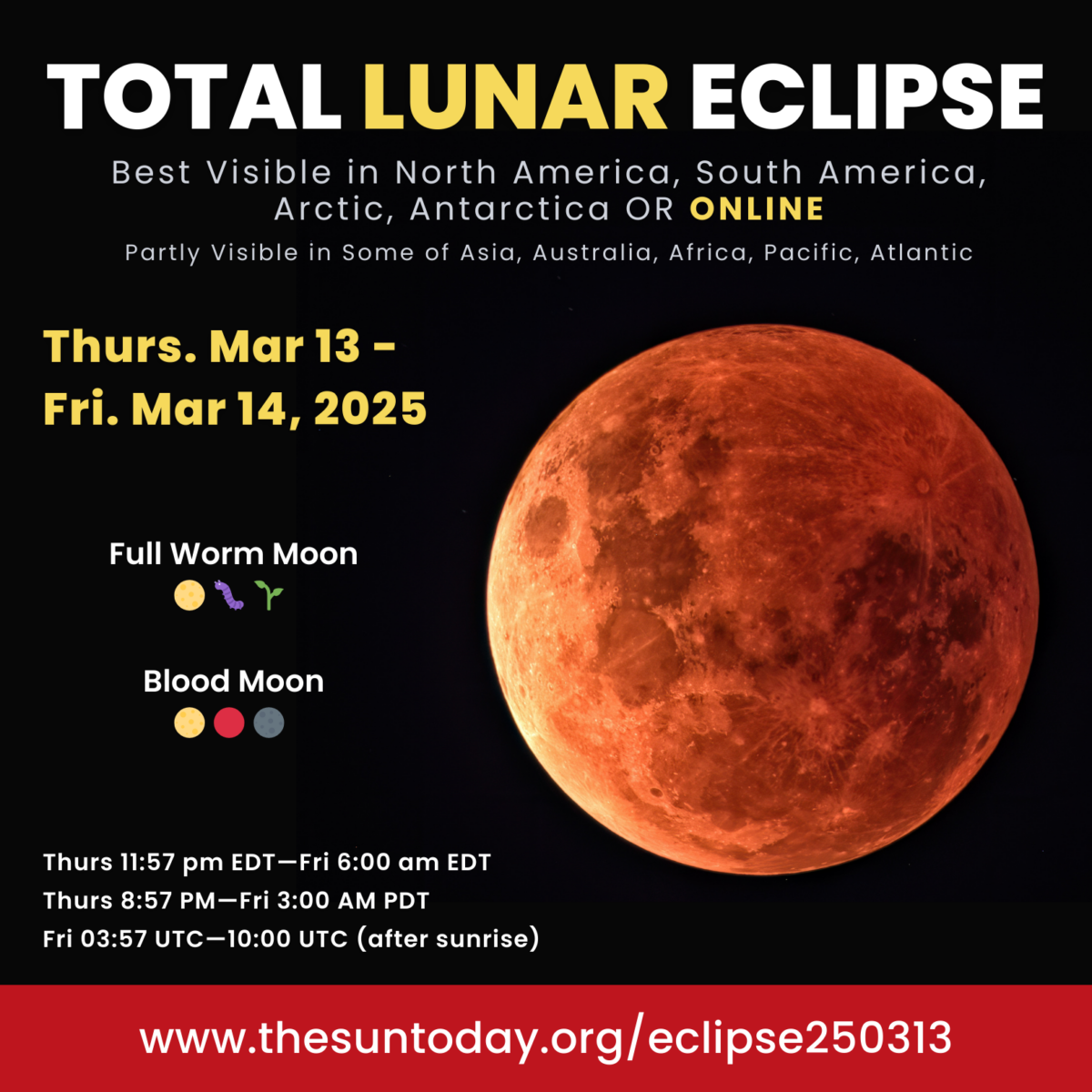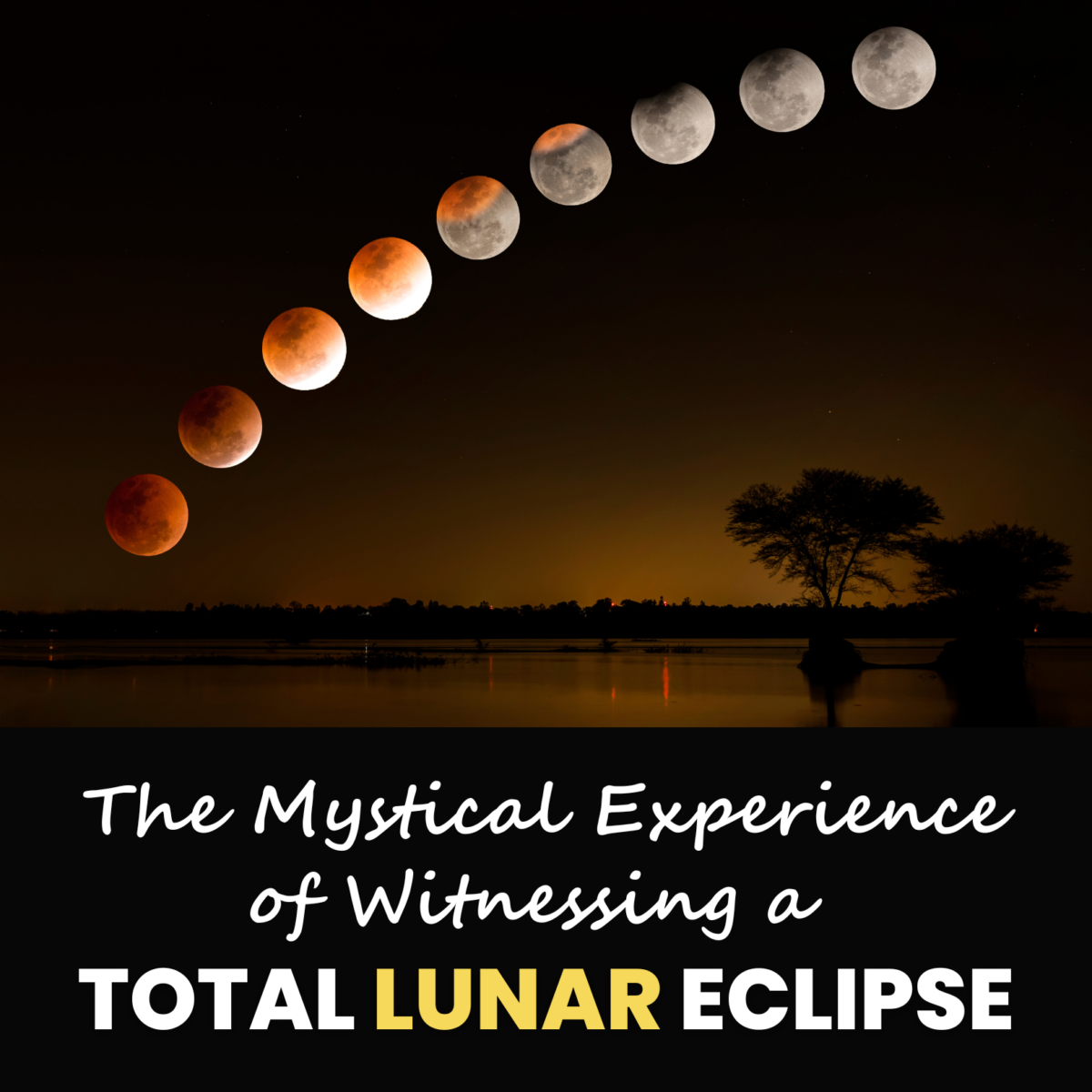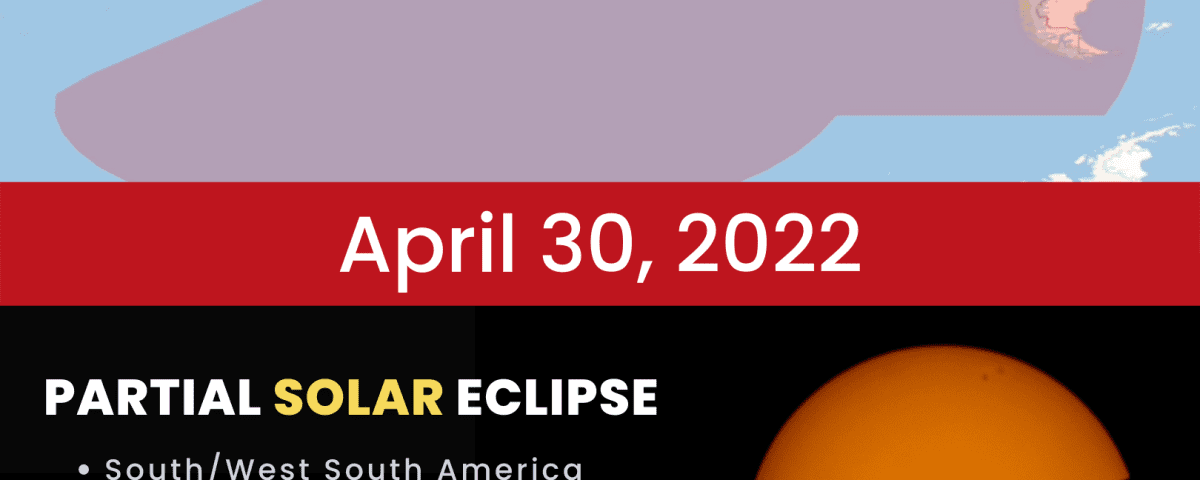
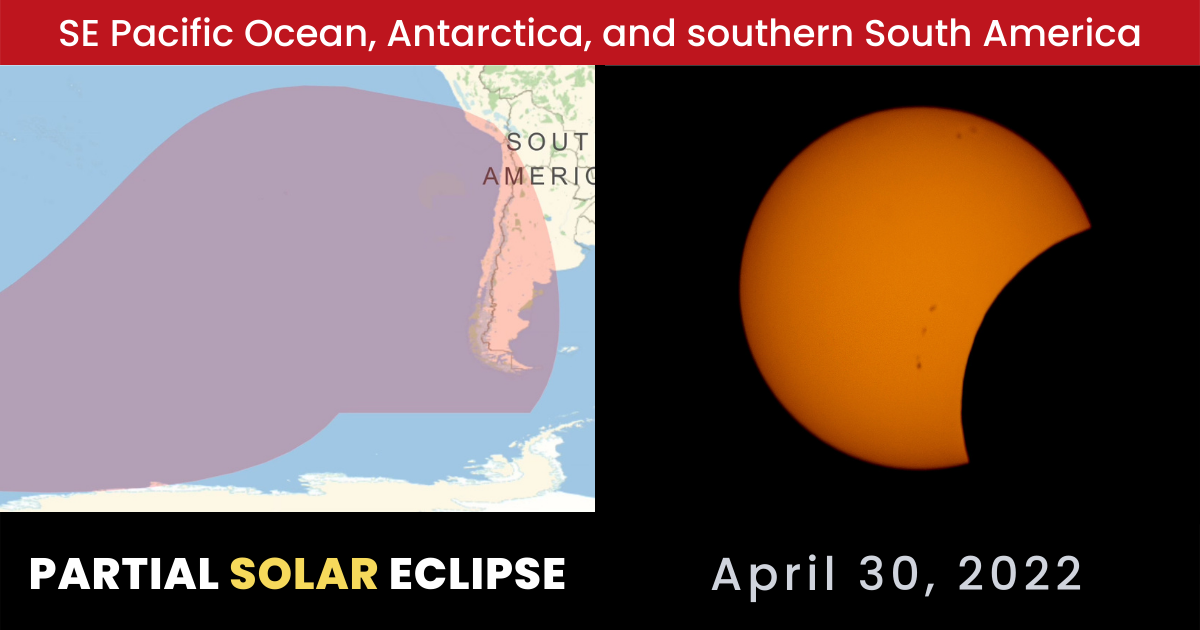
Watch the replay of the partial solar eclipse!
timeandate.com’s LIVE footage of the partial solar eclipse on April 30, 2022 starts at 3:30 PM EDT. If the skies are clear, this eclipse is visible from southern South America, parts of Antarctica, and over the Pacific and Atlantic Oceans.
https://youtu.be/Q3xLOICx_fM
 The April 30, 2022 partial solar eclipse is the first eclipse of the first eclipse season of 2022. It will be visible starting in the southeast Pacific Ocean, the edge of Antarctica, and southern South America.
The April 30, 2022 partial solar eclipse is the first eclipse of the first eclipse season of 2022. It will be visible starting in the southeast Pacific Ocean, the edge of Antarctica, and southern South America.
- The eclipse is first observed in the southeastern Pacific near the coast of Antarctica at 18:45 UTC (2:45 pm EST).
- The maximum eclipse is south of the southern tip of South America at 20:41 UTC (4:41 pm EST).
- The eclipse is last observed at 22:38 UTC (6:38 pm EST).
- At maximum eclipse, 63.96 percent of the sun is eclipsed.
- This occurs on a rare “black moon”, a non-astronomical term for the second new moon in a month. The last new moon was on April 1, 2022.

Learn more about Partial Solar Eclipses »
The Sun is still super bright, too bright to look at meaning that there is not a safe time to look at the eclipse without safe solar viewing glasses, solar filters, or other safe viewing methods.
The animation below shows the eclipse over the globe from the vantage point of the moon.
An animation of the April 30, 2022, partial solar eclipse from the moon’s vantage point. The lightly shaded circle with the black outline is the penumbral shadow. The partial eclipse is visible inside the penumbra. Animation by Fred Espenak and Michael Zeiler.
Here are some of the cities where the eclipse is visible:
SOURCE: timeanddate.com
The map of the eclipse below shows the path and full extent of the eclipse. The red line shows the path of the sun and the star is the point of the greatest eclipse.
You may have often heard that solar eclipses are rare. That statement gives the idea that they don’t happen very often. They aren’t rare in occurrence since we get on average 2 per year. What makes them rare is not when but where they happen. Earth is a very big place and covered mostly with water. The path and extent of solar eclipses are comparatively small. Eclipses usually happen in very remote places, over the ocean, or in this case both.
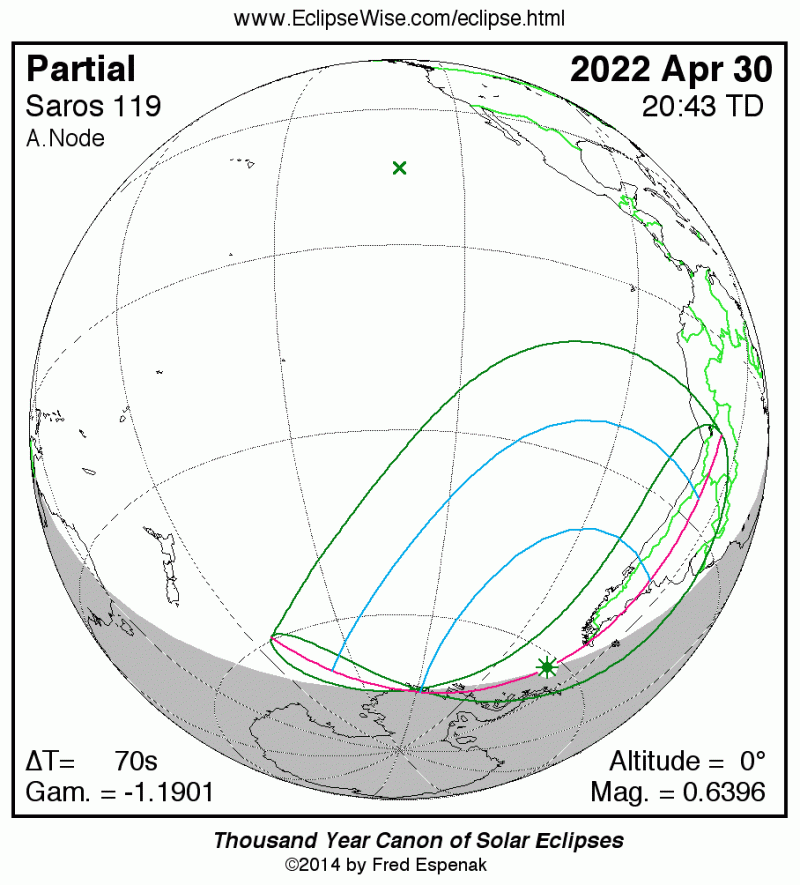
A map of the partial solar eclipse on April 30, 2022. The path is across the southeast Pacific, a tiny piece of Antarctica, and southern South America. Key to Solar Eclipse Maps here. Image via Fred Espenak.
May 15-16, 2022 — Total Lunar Eclipse
The second eclipse of the first season is a total lunar eclipse on May 15-16, 2021.
Where can you see it?
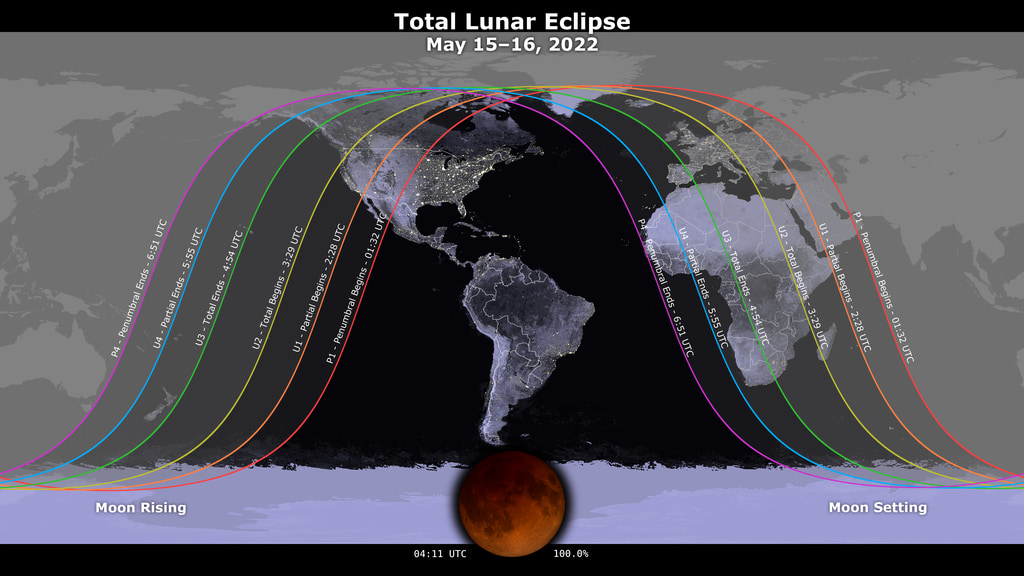
A map showing where the May 15-16, 2022 lunar eclipse is visible. Contours mark the edge of the visibility region at eclipse contact times. The map is centered on 63°52’W, the sublunar longitude at mid-eclipse. credit: NASA SVS
Learn more about the May 15-16, 2022 Eclipse
Stay tuned for more sun fun!
The second eclipse season for 2022 is October-November with a partial solar eclipse on October 25 and a total lunar eclipse on November 7-8. More to come.


